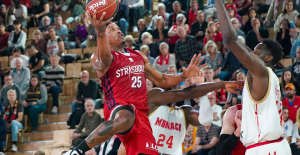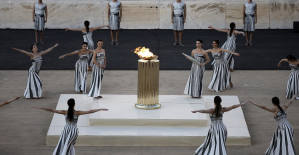Some cities have a dubious reputation. Too big, too dirty, possibly dangerous. So you go and see if that's true. One is often surprised: every new day in a strange place fuels childlike curiosity, takes people closer to their hearts, drives sore feet through endless streets. You want to see everything and never rest. Until you surrender.
Mexico City is such a metropolis. It delivers what defines a cosmopolitan city: splendor and history, pomp and palaces, wild architecture, an internationally celebrated gastronomic scene, high and low culture.
It is best to spend at least a whole week here. However, if there is not enough time on a trip through the country, we present a compact three-day program here.
Tour guide and architecture connoisseur Santiago García de Vinuesa advises starting your exploration of Mexico City in the historic center. At the Zócalo, the huge main square, lies the birthplace of the capital: Tenochtitlán, the former capital of the Aztec empire, whose remains lie inconspicuous today. The ruins of the Templo Mayor are outshone here by the largest cathedral in the Americas, once a symbol of the imperial power of the Spanish conquerors.
Until the middle of the 19th century, today's historical center basically covered the whole city. "That's why there are so many hidden gems and buildings from all eras here," says Santiago during a foray into the area. “It's a busy neighborhood because everyone comes here to shop. But it's also very real.”
Awkwardly you let yourself be carried along by the stream of people, constantly looking to the left and right, although the cars are only coming from one direction. The disharmonious sound of the organijeros - organ players in uniform - underscores the chaotic hustle and bustle appropriately, but increases the stress when you try to find your way around.
In moments of overpowering, it is best to keep an eye out for archways that lead into the courtyards of noble colonial palaces - and there, for example, to the "Azul Histórico" restaurant (Isabel La Católica 30) by the renowned chef Ricardo Muñoz Zurita.
Heading west, you pass a number of impressive monuments that were built towards the end of the 19th century - after independence, under the reign of General Porfirio Díaz. At that time, the upper class oriented itself towards France. Magnificent Art Nouveau buildings such as the Palacio de Hierro – an upscale shopping center – and the noble “Gran Hotel Ciudad de México” with its colorful roof made of Tiffany glass were built.
The Palacio Postal, the old main post office, is reminiscent of a Venetian palace. And the cultural center Palacio de Bellas Artes shows a wild mix of architectural styles, from neoclassicism to art nouveau to art deco - typical of Mexico City.
Mexico City's architecture blends so many different styles because the city's leaders drew on so many influences, Santiago says. They wanted to make the city more European. They were inspired by the lifestyle of American suburbs. But they also looked to the pre-Columbian past for identity. "All while trying to be modern and cosmopolitan."
Another tip: the Secretariat for Public Education (Secretaría de Educación Pública). There, visitors can marvel at murals by artist Diego Rivera. They emerged after the Mexican Revolution in the early 20th century. Rivera is one of the most important modernist painters in Mexico.
Those who are not tired in the evening should head to the trendy Roma district for at least one drink. There, try a mezcal cocktail with smoky pineapple at Licorería Limantour, ranked fourth on the 2022 list of the 50 best bars in the world.
Then it's time to dance in the Zona Rosa, a party district and a magnet for the LGBTQ community. There are many gay bars and clubs here. During the day, the art galleries in the neighborhood beckon. Antique shops feature stone lions, paintings of Jesus, mahogany bureaux inlaid with gold and Louis XIV-style chairs. Admittedly, nothing for hand luggage.
Where the traveler remembers something familiar in a foreign country, he feels he has been picked up right away. No wonder the Roma and Condesa neighborhoods draw so many visitors with their brunch spots, boutiques, and gracefully rocked facades. You might think you are in Rome or Barcelona, at least somewhere in Europe.
The best thing to do is stroll through the streets, look and discover. In the Parque México you can recharge your batteries on a bench and watch well-heeled Mexicans, who obviously don't have to work hard on a Monday, do their morning exercise. Roma and Condesa are of course completely upgraded and very expensive by Mexican standards.
A lunch recommendation is the fish restaurant "Contramar" (Calle de Durango 200), where a virtuoso waiter serves excellent tuna sashimi - provided that a foreign visitor gets a seat. Successful bohemians and everyone else who has made it dine and chat here - creative people with thick rings and narrow beards, society ladies with XXL sunglasses, but also ordinary business people.
Another address that is often recommended is the Mercado Roma (C. Querétaro 225). The market offers tacos, paella, ceviche, vegan Italian snacks and colorful smoothies, among other things. However, the market hall could be in almost every hipster district from Bushwick to Berlin-Kreuzberg, which basically makes them interchangeable.
Not far away is the large city park of Chapultepec. Anyone who avoids the promenade with the hawkers will find peace and quiet on lonely walks. Fountains splash, a horse carousel stands still, squirrels hop up trees. A worker sleeps in a wheelbarrow. The car noise is pleasantly distant.
However, the area is too interesting for lounging around. There are several cultural highlights around the park, most notably the imposing National Museum of Anthropology (Museo Nacional de Antropología). Also worth seeing are the museums of modern and contemporary art (Museo de Arte Moderno and Museo Tamayo) and the Casa Barragán, former studio of the architect Luis Barragán.
The Castillo de Chapultepec is a curiosity. Built by the Spanish colonial rulers, Maximilian I Palace served as the imperial residence from 1864. The Austrian, in turn, was used as a puppet regent by the French, who were interfering in Mexico's internal affairs. And killed three years later. Today there is a historical museum in the castle.
If you haven't seen enough art yet, visit the posh district of Polanco north of the park. The avant-garde Museo Soumaya awaits there, a prestige project by the Mexican billionaire Carlos Slim, with pictures by important painters in Europe - and the largest collection of sculptures by the sculptor Auguste Rodin. Right next door is the Museo Jumex with contemporary works from Warhol to Naumann.
The upper class lives in Polanco. Therefore security guards everywhere, electricity and barbed wire on the houses, dog walkers and street sweepers. You can see at first glance who has a lot and who is just getting by. Absurd scenes ensue: A security guard warns in front of a designer shop – quickly step aside! The ground suddenly moves, an SUV pulls up from an underground garage.
Friends of fine dining reserve a table in Polanco at "Pujol" (Tennyson 133), one of the trendiest restaurants in the world.
An evening street food tour offers a contrast to the star cuisine. Guide Clarissa Obregón estimates that the majority of Mexicans eat on the streets. Most work six days a week, so time is short. "That's why we need good street food." And you can find that on every corner in Mexico City.
It starts in Condesa with tortas de cochinita pibil, sandwiches with stewed pork. Continue towards San Rafael, once a residential area, now a middle class: a street vendor made famous by YouTube makes tacos campechanos with chorizo and beef.
Then off to a gloomy pulqueria, where the national drink, which takes some getting used to, pulque, made from fermented juice, is served in three versions. "We say it makes you sociable and a little bit horny," says Clarissa. "And it heals broken hearts." Well then!
The Mercado de San Cosme continues with fried quesadillas, followed by tamales, filled corn dough, and atole, a heavy, hot drink also made from corn. In Santa Maria, Aaron's booth features Chicken Plus Mole, a gooey-delicious sauce made with more than 40 ingredients. Although the stomach is tight, you keep eating, simply because it tastes so delicious. Mezcal helps.
Time for some relaxation on the third day. The rather cozy district of Coyoacán in the south is recommended for this. A tourist magnet there is the cobalt blue Frida Kahlo Museum, birthplace and place of work of Mexico's most famous artist, also called Casa Azul.
From there it is worth taking a long walk down to the oldest university on the continent, the Universidad Nacional Autónoma de México (UNAM). The campus is a UNESCO World Heritage Site. Photo motif is the central library decorated with murals.
On the way you walk past old VW Beetles and nice cafés in sleepy backyards. Some walls are overgrown with flowers, others hide enormous wealth. Street vendors set up their stalls in the morning, a band plays in the park, people walk their dogs. Tip: There are nice souvenirs in the Artesanías market.
In the afternoon we recommend a tour through the canals of Xochimilco, once created for agriculture, today a popular destination. Around 1,500 trajineras gondolas past artificial islands. They transport large families, couples and tourists. On the colorful boats people celebrate, drink and cuddle. Floating vendors sell beer and snacks. The deeper you go into the network of waterways, the quieter it gets.
A grotesque highlight is the Isla de las Muñecas, the island of the dolls, which – partly horribly weathered – hang in the trees in dozens. According to legend, a girl drowned here. A fisherman found the body and then repeatedly propelled dolls, which he hung to drive away the dead girl's spirit.
That sounds scarier than it looks in the end - just like a visit to Mexico City itself.
Arrival: Lufthansa flies from Frankfurt/Main directly to Mexico City, from other German airports there are connections with a stopover. Inexpensive domestic flights to the capital depart daily from the Cancún hub in the Yucatán.
Entry: German nationals need a valid passport to enter Mexico. A completed tourist card must be kept until the end of the trip. The Federal Foreign Office offers further information on its website.
Climate and travel time: Mexico City is at around 2300 meters. The dry season from November to May is considered the best time to travel. During the day it is warm but not hot. At night it cools down noticeably.
Transport: The cheapest and most convenient mode of transport is Uber.
Sightseeing: guided tours of Gyde by locals

 War in Ukraine: when kyiv attacks Russia with inflatable balloons loaded with explosives
War in Ukraine: when kyiv attacks Russia with inflatable balloons loaded with explosives United States: divided on the question of presidential immunity, the Supreme Court offers respite to Trump
United States: divided on the question of presidential immunity, the Supreme Court offers respite to Trump Maurizio Molinari: “the Scurati affair, a European injury”
Maurizio Molinari: “the Scurati affair, a European injury” Hamas-Israel war: US begins construction of pier in Gaza
Hamas-Israel war: US begins construction of pier in Gaza First three cases of “native” cholera confirmed in Mayotte
First three cases of “native” cholera confirmed in Mayotte Meningitis: compulsory vaccination for babies will be extended in 2025
Meningitis: compulsory vaccination for babies will be extended in 2025 Spain is the country in the European Union with the most overqualified workers for their jobs
Spain is the country in the European Union with the most overqualified workers for their jobs Parvovirus alert, the “fifth disease” of children which has already caused the death of five babies in 2024
Parvovirus alert, the “fifth disease” of children which has already caused the death of five babies in 2024 Inflation rebounds in March in the United States, a few days before the Fed meeting
Inflation rebounds in March in the United States, a few days before the Fed meeting Video games: Blizzard cancels Blizzcon 2024, its annual high mass
Video games: Blizzard cancels Blizzcon 2024, its annual high mass Falling wings of the Moulin Rouge: who will pay for the repairs?
Falling wings of the Moulin Rouge: who will pay for the repairs? “You don’t sell a company like that”: Roland Lescure “annoyed” by the prospect of a sale of Biogaran
“You don’t sell a company like that”: Roland Lescure “annoyed” by the prospect of a sale of Biogaran Exhibition: in Deauville, Zao Wou-Ki, beauty in all things
Exhibition: in Deauville, Zao Wou-Ki, beauty in all things Dak’art, the most important biennial of African art, postponed due to lack of funding
Dak’art, the most important biennial of African art, postponed due to lack of funding In Deadpool and Wolverine, Ryan and Hugh Jackman explore the depths of the Marvel multiverse
In Deadpool and Wolverine, Ryan and Hugh Jackman explore the depths of the Marvel multiverse Tom Cruise returns to Paris for the filming of Mission Impossible 8
Tom Cruise returns to Paris for the filming of Mission Impossible 8 Skoda Kodiaq 2024: a 'beast' plug-in hybrid SUV
Skoda Kodiaq 2024: a 'beast' plug-in hybrid SUV Tesla launches a new Model Y with 600 km of autonomy at a "more accessible price"
Tesla launches a new Model Y with 600 km of autonomy at a "more accessible price" The 10 best-selling cars in March 2024 in Spain: sales fall due to Easter
The 10 best-selling cars in March 2024 in Spain: sales fall due to Easter A private jet company buys more than 100 flying cars
A private jet company buys more than 100 flying cars This is how housing prices have changed in Spain in the last decade
This is how housing prices have changed in Spain in the last decade The home mortgage firm drops 10% in January and interest soars to 3.46%
The home mortgage firm drops 10% in January and interest soars to 3.46% The jewel of the Rocío de Nagüeles urbanization: a dream villa in Marbella
The jewel of the Rocío de Nagüeles urbanization: a dream villa in Marbella Rental prices grow by 7.3% in February: where does it go up and where does it go down?
Rental prices grow by 7.3% in February: where does it go up and where does it go down? Even on a mission for NATO, the Charles-de-Gaulle remains under French control, Lecornu responds to Mélenchon
Even on a mission for NATO, the Charles-de-Gaulle remains under French control, Lecornu responds to Mélenchon “Deadly Europe”, “economic decline”, immigration… What to remember from Emmanuel Macron’s speech at the Sorbonne
“Deadly Europe”, “economic decline”, immigration… What to remember from Emmanuel Macron’s speech at the Sorbonne Sale of Biogaran: The Republicans write to Emmanuel Macron
Sale of Biogaran: The Republicans write to Emmanuel Macron Europeans: “All those who claim that we don’t need Europe are liars”, criticizes Bayrou
Europeans: “All those who claim that we don’t need Europe are liars”, criticizes Bayrou These French cities that will boycott the World Cup in Qatar
These French cities that will boycott the World Cup in Qatar Basketball: Strasbourg appeals the victory recovered by Monaco
Basketball: Strasbourg appeals the victory recovered by Monaco Top 14: UBB with Tatafu and Moefana against Bayonne
Top 14: UBB with Tatafu and Moefana against Bayonne MotoGP: Bagnaia dominates qualifying practice in Spain and sets track record
MotoGP: Bagnaia dominates qualifying practice in Spain and sets track record Olympic Games: in Athens, Greece transmits the Olympic flame to France
Olympic Games: in Athens, Greece transmits the Olympic flame to France


















